
UPDATED FOR 2025
Delaying Roof Repairs: What Is the True Cost of Waiting?
Discover the true cost of delaying roof repairs on your Long Island home and how small problems can become big- and very expensive- disasters. Including real examples and cost breakdowns.
Key Takeaways:
- Minor roof repairs typically cost $300-$1,500, but delaying them leads to $5,000-$25,000+ in cascading damage—a 5x to 15x cost multiplier.
- Water damage spreads rapidly through roof decking, insulation, and structural components, with most visible interior stains indicating weeks or months of hidden deterioration.
- Wet insulation loses thermal efficiency immediately, adding $50-$200 monthly to Long Island energy bills while the underlying problem worsens.
- Proactive homeowners spend roughly $5,500 over 10 years on maintenance and minor repairs, while reactive homeowners pay $33,900+ dealing with emergencies and major damage.
- Insurance typically denies claims for damage resulting from long-term neglect, meaning you’ll pay out-of-pocket for problems that prompt repairs would have prevented.
The Quick Answer: What Is the True Cost of Delaying Roof Repairs?
Small roof repairs typically cost $300-$1,500 depending on the issue.
But delay those repairs, and you’re looking at $5,000-$25,000+ in cascading damage.
A $500 flashing repair ignored for two years can lead to $8,000 in structural repairs, insulation replacement, and interior damage.
What starts as a few hundred dollars for a quick fix can quickly escalate if neglected. A few missing shingles—$200 to replace—can expose your roof deck to water intrusion that costs $3,000-$6,000 to repair properly.
The cost multiplier for delayed repairs typically ranges from 5x to 15x the original repair price. Escalating repair costs are common as minor issues worsen and require more extensive restoration. But raw numbers don’t capture the full picture of what delay costs Long Island homeowners.
Even a full roof replacement can be more cost-effective depending on the age of your roof.
Hold on to your old roof for too long and you could end up with interior damage including ceiling, floors, furniture, and more, not to mention the then necessary roof replacement, costing far more than just the roof replacement alone if you had acted sooner.
With an older roof, you’ll also pay through higher energy bills from compromised insulation, emergency service premiums during storms, temporary housing if damage becomes severe, and reduced home value when problems become visible.
These are just some of the higher costs that come with putting off repairs. There’s also the hidden cost of neglecting maintenance—unseen expenses like decreased energy efficiency, potential insurance issues, and water damage that can impact your peace of mind and property value.
The smartest financial decision is addressing problems when they’re small, manageable, and relatively inexpensive, ultimately saving you money in the long run.
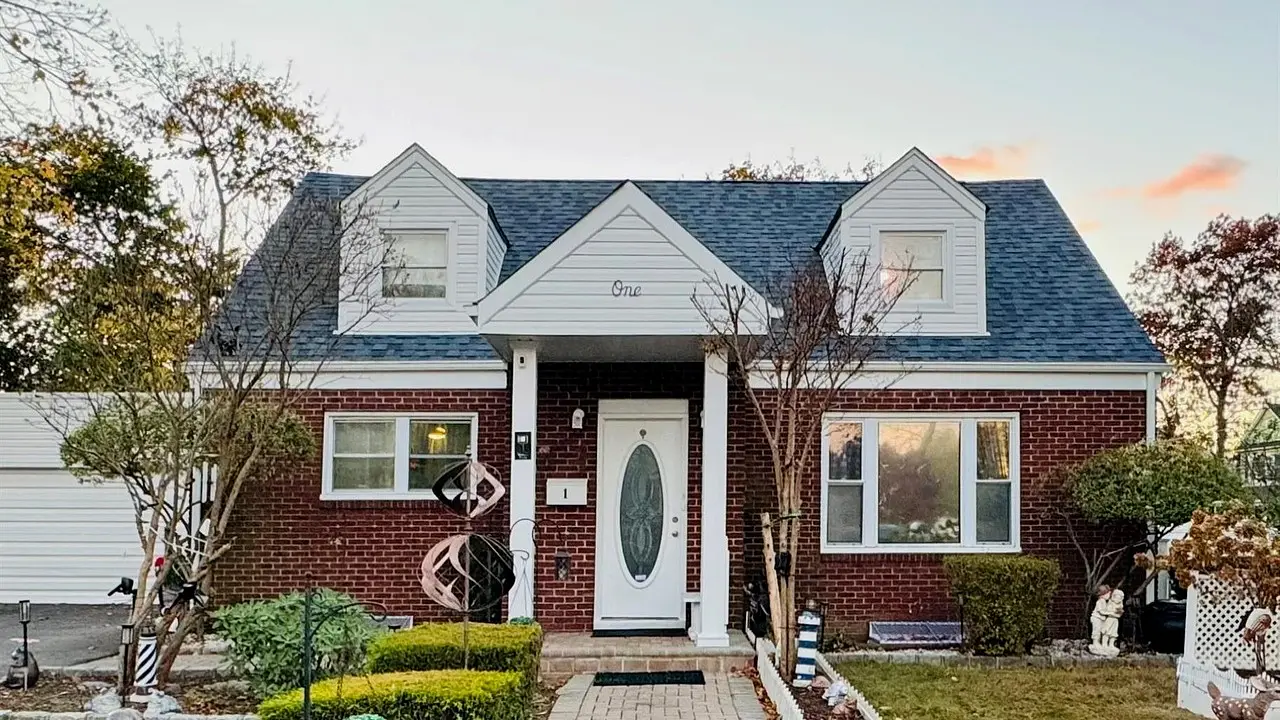
How Small Roofing Problems Escalate
Understanding the progression from minor issue to major disaster helps explain why immediate action saves money. Roof issues such as leaks, damaged shingles, or poor flashing can quickly escalate if not addressed.
Roofing problems follow predictable patterns of deterioration, with each stage causing exponentially more damage than the last.
Water Finds Every Weakness
Roof leaks rarely stay contained. Water follows the path of least resistance, traveling along rafters, through insulation, and into wall cavities before appearing as ceiling stains.
By the time you see water damage inside your Long Island home, the problem has existed for weeks or months. The visible stain represents a fraction of the actual water intrusion occurring above your ceiling.
Every rain event makes the problem worse. Small openings expand as water freezes, wood swells, and materials deteriorate.
What starts as water seeping through one damaged shingle becomes water pouring through compromised decking during the next nor’easter.
Wood Rot Spreads Like Cancer
Once water reaches wood components—roof decking, rafters, or fascia—rot begins. Wood rot doesn’t stay localized.
Moisture spreads through wood fibers, and fungal decay continues even between rain events. Suffolk County’s humid climate accelerates this process significantly.
A 2-foot section of damaged decking discovered early requires replacing that section only. Ignore it for two years, and you’re replacing 10-15 feet of decking plus affected rafters. The repair complexity and cost multiply exponentially. Addressing necessary repairs promptly is crucial to prevent further escalation and higher expenses.
Structural Damage Compounds
Weakened roof decking can’t support loads properly. In winter, snow accumulation stresses compromised areas, potentially causing collapse.
Rotted rafters lose their structural integrity, threatening your entire roof system. What began as a minor leak becomes a structural engineering problem requiring extensive repairs. This can result in significant damage to your home’s structure and safety.
Insurance companies often deny claims for damage resulting from long-term neglect. If evidence shows you ignored obvious problems for years, you’re paying out-of-pocket for repairs insurance might have covered if addressed promptly.
Mold Growth Accelerates
Mold needs three things: moisture, organic material, and warmth. Your roof leak provides all three in abundance.
Mold colonies establish within 24-48 hours of water exposure. In weeks, they spread through insulation, drywall, and structural materials.
Mildew growth is also a concern, as persistent moisture creates ideal conditions for both mold and mildew to thrive, increasing the risk of property damage and costly remediation.
Mold remediation costs $2,000-$10,000+ depending on extent and location. Professional remediation requires containment, removal of affected materials, antimicrobial treatment, and verification testing.
You can’t simply paint over mold—it requires complete removal and affected material replacement. Moisture buildup from ongoing leaks or high humidity further contributes to the spread of mold and mildew.
Unchecked, mold and mildew growth can cause extensive damage to building materials and indoor air quality. The combined threat of mold and mildew growth makes timely repairs essential.
Mold exposure can trigger allergies, asthma, and other respiratory problems. These health risks are especially serious for children, seniors, and those with compromised immune systems. Prolonged exposure to mold and mildew can have a direct impact on your family’s health, creating hazardous living conditions.
Roof problems don’t just affect the roof—they can compromise the entire property, including insulation, electrical systems, and even the foundation, making prompt repairs essential to protect your home.
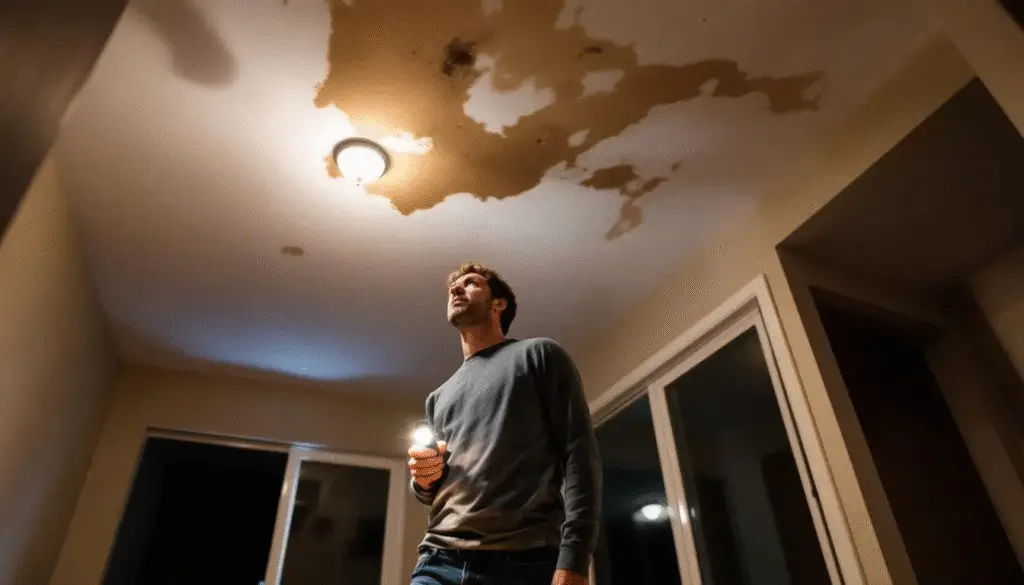
The Hidden Costs You’re Already Paying
Beyond obvious repair expenses, delayed roofing problems cost you money every single month through multiple channels.
These ongoing costs accumulate silently while you wait to address the underlying problem. This is a classic example of a hidden cost—unseen expenses that can add up quickly and impact your finances in ways you might not expect.
Energy Efficiency Losses
Water-damaged insulation loses R-value immediately. Wet insulation provides virtually no thermal barrier.
Your HVAC system runs longer and harder to maintain comfortable temperatures. On Long Island where energy costs are high, this adds $50-$200+ monthly to utility bills.
Over a year, you’re paying $600-$2,400 in additional energy costs while ignoring the underlying problem. That’s enough to pay for most minor roof repairs several times over. Roof issues can significantly reduce your home’s energy efficiency, leading to even higher utility bills and less comfort year-round.
Accelerated Interior Damage
Water doesn’t stop at your ceiling. It runs down walls, damages flooring, ruins furniture, and destroys stored belongings in attics.
Drywall replacement costs $2-$4 per square foot installed. Paint, primer, and finishing add more. A leak affecting a 10×12 bedroom ceiling means $500-$1,000 in interior repairs.
Hardwood floors damaged by water leaks require sanding, refinishing, or complete replacement at $8-$15 per square foot. Carpet replacement runs $3-$8 per square foot plus padding and installation.
Pest Infestations
Rotted wood and gaps in your roof create entry points for insects, rodents, and birds. Long Island’s raccoons, squirrels, and birds actively seek shelter in compromised roof areas.
Once pests establish residence in your attic, you’re paying for pest control services ($300-$1,500), cleanup and sanitation ($500-$2,000), and repairs to damage they cause ($1,000-$5,000+).
Animals destroy insulation, chew wiring creating fire hazards, and leave waste that requires professional remediation. Prevention costs far less than dealing with established infestations.
Property Value Decline
Visible roof damage signals deferred maintenance to potential buyers. Stains on ceilings, missing shingles, and sagging rooflines reduce your home’s market value.
Real estate appraisers note roof condition and adjust valuations accordingly. A home needing roof work typically appraises $10,000-$30,000 lower than comparable homes with sound roofs. Additionally, a neglected roof can diminish your home’s curb appeal, making it less attractive to buyers and further impacting its value.
If you’re planning to sell within five years, every month you delay repairs costs you in reduced property value and buyer negotiating leverage.
Emergency Service Premiums
When minor problems become emergencies during storms, you’ll pay premium rates for immediate service. Emergency roofing calls cost 50-100% more than scheduled repairs.
You’ll also pay for temporary repairs, tarps, and emergency water extraction—expenses completely avoidable with proactive maintenance.
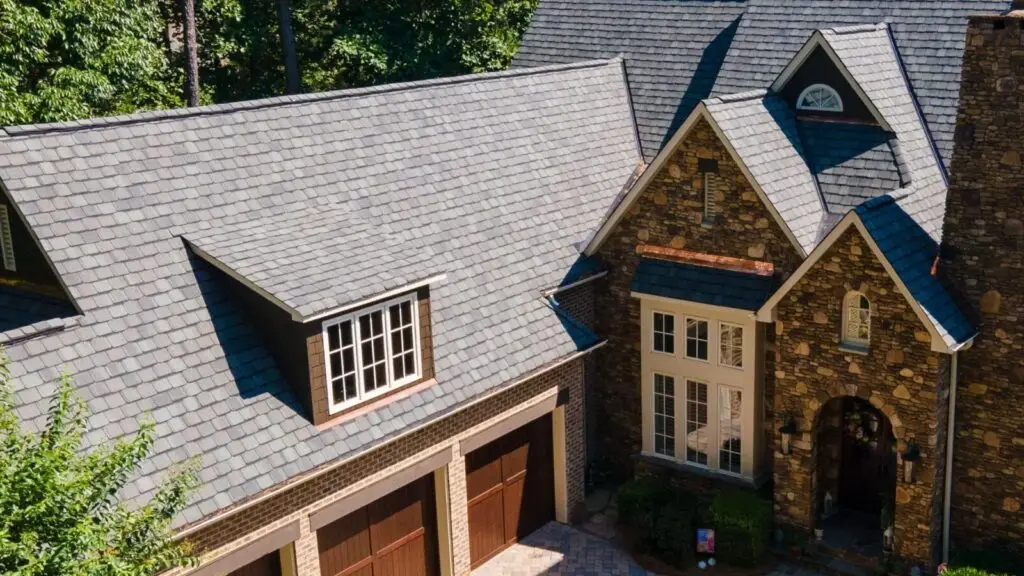
Real Examples: Minor Problems That Became Major Disasters
These actual cases from Long Island homeowners illustrate how quickly small problems escalate into financial catastrophes.
Escalating repair costs are a common outcome when minor roof issues are ignored, turning what could have been affordable fixes into major expenses.
Each example shows the original repair cost versus the eventual total damage when problems were ignored.
The $400 Flashing Repair That Cost $12,000
A Ronkonkoma homeowner we worked with noticed a small water stain near their chimney but decided to wait before doing anything about it.
However, by spring, water had rotted roof decking around the chimney, damaged rafters, soaked insulation, and created extensive mold growth in the attic.
The final bill included:
$800 for chimney flashing repair
$3,200 for structural lumber and decking replacement
$2,400 for mold remediation
$1,800 for new insulation
$2,600 for interior ceiling and wall repairs
And $1,200 for repainting
Total: $12,000 for a problem that could have been avoided with proper roof and chimney flashing upkeep.
Missing Shingles: From $250 to $8,500
After a windstorm, a soon-to-be County Roofing customer in Sag Harbor noticed 4-5 missing shingles but decided to leave it alone.
Two nor’easters later, water had penetrated the exposed decking.
The repair eventually required replacing:
120 square feet of damaged decking: $1,800
Installing new underlayment: $600
Replacing damaged insulation: $900
Repairing water-damaged drywall in two rooms: $2,400
Addressing mold growth: $1,500
And completing the original shingle replacement: $1,300
Total: $8,500
The Ignored Valley That Destroyed a Ceiling
Roof valleys handle enormous water flow during storms. A Suffolk County homeowner we worked with ignored debris accumulation and minor deterioration in a valley flashing for roughly three years.
The result?
During a heavy rainstorm, the compromised valley failed completely:
Water poured into the home, destroying the living room ceiling: $3,200 to repair
Damaging hardwood floors: $4,800 to refinish
Ruining furniture: $2,500 loss
Emergency water extraction: $800
And, finally, valley repair and decking replacement: $2,400
Total: $13,700 for a problem that annual upkeep would have prevented.
Ventilation Problems: The Slow Disaster
Sometimes, it’s the smallest things that can turn into big problems.
We had a customer who paid big when they noticed a slight discoloration in a section of their ceiling and assumed it was just staining- so they decided to leave it be.
Inadequate attic ventilation combined with a minor roof leak created perfect conditions for extensive damage. A simple repair early on could have prevented the disaster and kept costs low.
Over four years, trapped moisture caused widespread decking deterioration, destroyed all attic insulation, created extensive mold requiring professional remediation, and rotted roof rafters requiring structural repairs.
The comprehensive fix cost $28,000 including partial roof replacement, structural repairs, complete insulation replacement, mold remediation, and upgraded ventilation systems.
If they had simply kept up with regular roof repairs and replacement of old roofing materials, they would have saved big over the long-run.
These real-life cases show that addressing issues promptly with simple repairs is key to saving money and avoiding escalating repair costs.
THE BEST WARRANTIES IN THE INDUSTRY- ONLY 2% OF ROOFING COMPANIES CAN OFFER
25-Year Labor, 50-Year Material Warranty
We’ve met the toughest requirements in the residential roofing industry- and we use only the best materials.
That’s why we stand behind our work with the best warranties in the industry- warranties only 2% of the roofing industry can offer.
Your house deserves the best roofing warranty on the market. Give us a call today and get a brand new roof with a 25-year labor, 50-year material warranty from the best roofing contractor throughout Long Island and New York.
Warning Signs You Can’t Afford to Ignore
Certain symptoms always indicate active problems requiring immediate professional attention.
Recognizing these warning signs early prevents minor repairs from becoming major disasters.
Interior Water Stains
Any water stain on ceilings or walls means active or recent leaks. Stains don’t appear from minor moisture—they indicate significant water intrusion.
Don’t assume a stain that doesn’t grow isn’t a problem. Water may be causing damage elsewhere or the leak may be intermittent based on wind direction and rainfall intensity.
County Roofing Systems can trace stains to their source and assess the full extent of damage you can’t see from inside your home.
Missing or Damaged Shingles
Long Island’s coastal winds and storms regularly damage shingles. A few missing shingles expose vulnerable underlayment and decking to weather.
Damaged shingles with curling edges, cracks, or missing granules indicate age-related deterioration that will spread across your roof.
Aging shingles often show visible wear and may require replacement even if there are no active leaks, as recurring repairs signal the roof’s declining condition. Addressing problems while they’re isolated prevents widespread failure.
Sagging Roof Sections
Any visible sagging indicates serious structural problems. Roof decking or rafters have failed, usually from water damage, age, or excessive loads.
Sagging roofs represent safety hazards and require immediate professional evaluation. Maintaining the integrity of your roofing system is crucial, as system failure can compromise your home’s protection and value. This isn’t a problem that improves on its own—it only worsens until failure occurs.
Daylight Through Roof Boards
If you can see daylight through your roof boards from the attic, you have openings where water, pests, and cold air enter freely.
Small gaps become large gaps quickly. Temperature changes cause materials to expand and contract, enlarging openings each cycle.
Granules in Gutters
Asphalt shingles shed granules as they age. Excessive granules in gutters mean your shingles are deteriorating and losing their protective coating.
Without granules, shingles deteriorate rapidly from UV exposure. Granule loss can weaken shingles, making them more susceptible to water infiltration, leaks, and structural damage. You’re in the window where proactive replacement costs less than waiting for widespread failure.
Moss or Algae Growth
Organic growth indicates moisture retention on your roof surface. Moss roots work between shingles, lifting them and creating pathways for water intrusion.
Long Island’s humid climate promotes organic growth. Regular cleaning and treatment prevent growth from causing physical damage to roofing materials.
The Psychology of Delay: Why Homeowners Wait
Understanding why homeowners postpone repairs helps break the pattern of procrastination.
These common psychological factors prevent people from taking action despite knowing they should.
Normalizing the Problem
When a minor problem doesn’t immediately worsen, homeowners convince themselves it’s not serious. A slow leak that produces a small stain monthly becomes “normal.”
This normalization is dangerous. Your roof isn’t stabilizing—it’s deteriorating. Water damage accelerates over time as materials lose integrity.
Budget Concerns
Many Long Island homeowners delay repairs thinking they can’t afford them. But paying $500 now versus $5,000 later doesn’t require a sophisticated cost-benefit analysis.
County Roofing Systems offers financing options that make repairs affordable immediately. Spreading $1,000 over 12 months costs less than the energy waste from a compromised roof.
Optimism Bias
Homeowners hope problems will resolve themselves or remain stable. Roofing problems never improve spontaneously—they only worsen.
Professional assessment removes guesswork. You’ll know exactly what’s wrong, what it costs to fix, and what happens if you delay.
Fear of Scope Creep
Some homeowners avoid calling contractors because they fear being upsold expensive repairs. This fear causes them to ignore problems until they become obvious disasters requiring expensive solutions.
County Roofing Systems provides honest assessments. If you need only minor repairs, we’ll tell you. If problems are more extensive, we’ll explain why clearly.
Planning Fallacy
Homeowners tell themselves they’ll address problems “next month” or “after the holidays.” Months become years while damage accumulates.
Schedule the inspection today. Once you know what’s wrong and what it costs, you can make informed decisions rather than optimistic assumptions.
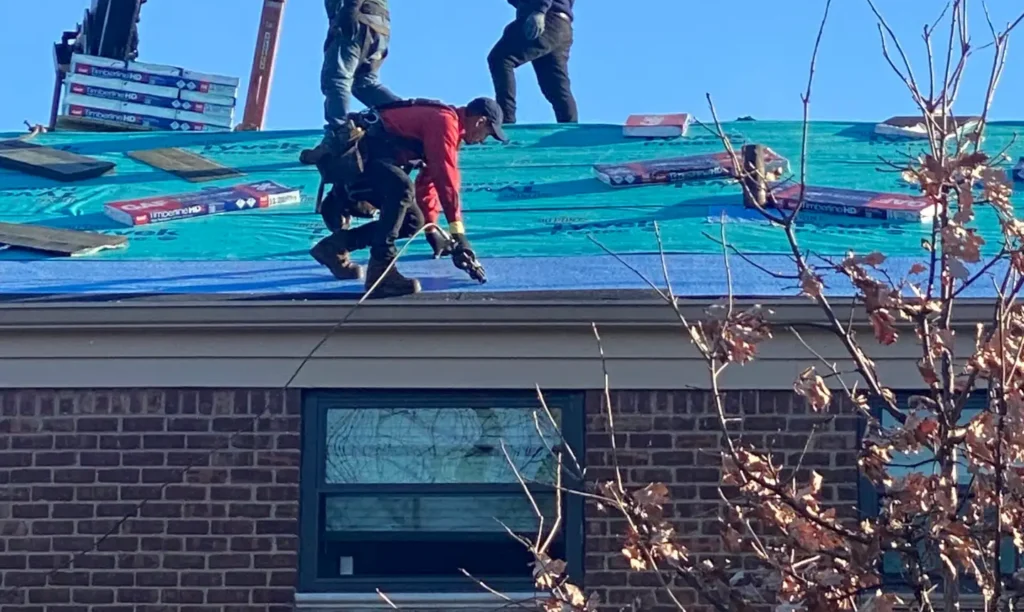
What Immediate Repairs Actually Cost
Knowing realistic repair costs helps you understand how affordable prompt action really is. Hiring a professional roofing contractor ensures repairs are done correctly and safely, protecting your home and investment.
Compare these prices to the disaster costs shown in earlier examples.
Minor Shingle Repairs
Replacing damaged or missing shingles costs $200-$600 depending on accessibility and extent. This includes labor, materials, and ensuring surrounding shingles remain properly sealed.
Compare this to $3,000-$8,000 repairing water damage from exposed decking.
Flashing Repairs
Chimney, skylight, and valley flashing repairs typically cost $300-$1,200 depending on complexity. Proper flashing installation requires skill and appropriate materials. Insurance companies may deny claims for water damage if they determine that flashing repairs were delayed or neglected.
Deferred flashing repairs lead to $5,000-$15,000 in structural and interior damage. The math isn’t complicated.
Ventilation Improvements
Inadequate attic ventilation causes moisture accumulation, ice dams, and premature roof aging. Adding or improving ventilation costs $500-$2,000.
Poor ventilation over time causes $10,000-$30,000+ in damage through decking deterioration, insulation destruction, and structural problems.
Leak Diagnosis and Repair
Professional leak diagnosis and repair runs $400-$1,500 for most issues. This includes identifying the source, accessing the area, making repairs, and ensuring water-tightness.
Ignored leaks cause progressive damage costing 10-20 times the original repair price plus interior damage restoration.
Preventive Maintenance
Annual roof inspections and maintenance cost $200-$400. This investment catches problems while they’re small and inexpensive to address. Timely roof replacement or repair, when recommended by your contractor, can prevent minor issues from escalating into major, costly damage.
Homeowners who invest in annual maintenance spend 60-80% less on roofing over 20 years compared to those who only respond to obvious problems.
Roof Replacement
We touched on roof replacement earlier, but the basis is simple: every roof has a lifespan.
There’s only so much you can repair an old roof before it just doesn’t cut it anymore.
If you get to that point, by choosing not to replace your old roof you’re rolling the dice. Except this isn’t a game you can win forever. Eventually, water damage will creep into your home and cause immense damage to not only your roof and ceiling but your interior as well.
The longer you wait, the worse the damage will be when you finally decide to do something about it.
Rising Energy Bills and Roof Damage
A damaged roof does more than let in water—it lets your hard-earned money slip away through rising energy bills.
When your roof has gaps, cracks, or missing shingles, it allows heat to escape in the winter and cool air to leak out in the summer. This forces your HVAC system to work overtime, driving up your energy bills and reducing your home’s overall energy efficiency.
Ignoring roof repairs means you’ll pay more each month just to keep your home comfortable. Over time, these higher energy bills add up, costing far more than the price of timely repairs.
Regular roof inspections and prompt attention to any signs of damage can help you catch problems early, keep your energy bills in check, and maintain a comfortable, efficient home year-round.
When Repairs Aren’t Enough: Knowing the Line
Sometimes the smartest financial decision is replacement rather than continued repairs.
Understanding when you’ve crossed that threshold prevents wasting money on a failing system.
Age and Remaining Life
If your Long Island roof is 20+ years old with multiple problems, investing in repairs may not make financial sense. You’re maintaining a system near end-of-life.
An aging or damaged roof can negatively impact your property value, make it harder to sell your home, and even affect mortgage approval, so replacement may be necessary to protect your investment.
County Roofing Systems provides honest assessments about repair versus replacement decisions. Sometimes the smart move is replacement that provides 20-30 more years of protection.
Extent of Damage
When problems affect large roof sections or multiple areas, replacement becomes more cost-effective than extensive repairs. Repairs exceeding 30-40% of replacement cost suggest replacement makes better financial sense.
Repeating Problems
If you’re calling for repairs annually or addressing the same issues repeatedly, your roof has reached end-of-life. Continuing repairs becomes throwing good money after bad.
Energy Efficiency Considerations
Older roofs with compromised insulation and ventilation cost significantly more to heat and cool. Modern roofing systems with proper insulation and ventilation reduce energy costs 15-25%.
Factor energy savings into replacement decisions. Your new roof pays for itself partially through reduced utility bills.
The Smart Approach: Proactive Maintenance
Breaking the cycle of deferred maintenance requires adopting systematic practices that catch problems early.
These strategies minimize long-term costs while maximizing your roof’s lifespan.
Schedule Annual Inspections
Professional inspections catch problems early when repairs cost hundreds instead of thousands. County Roofing Systems’ thorough inspections identify issues before they become visible.
Spring or fall inspections—after winter stress and before storm season—provide optimal timing for identifying and addressing problems.
Address Problems Immediately
When inspections reveal issues, schedule repairs promptly. Don’t wait for convenient timing—that timing never arrives and problems worsen.
Small repairs fit into most budgets, especially compared to emergency repairs after failure occurs.
Document Everything
Keep records of inspections, repairs, and maintenance. This documentation proves proper maintenance for insurance claims and adds value when selling your home.
Buyers pay premiums for homes with documented maintenance histories showing responsible ownership.
Invest in Quality Repairs
Cheap repairs cost more long-term. Materials that fail prematurely and workmanship that doesn’t last waste money.
County Roofing Systems’ 35+ years of Long Island experience ensures repairs done right the first time, with warranties backing our work.
Consider Preventive Upgrades
Sometimes upgrading ventilation, adding ice-and-water barriers, or installing impact-resistant materials during repairs prevents future problems.
These proactive investments cost more initially but reduce long-term expenses and extend your roof’s serviceable life significantly.
Nothing beats having a top-of-the-line roof, built by professionals, with the right roofing materials.
Give County Roofing Systems a call at (888) 366-6619 or contact us using the form below to get started on your roofing project today:
Real Financial Comparison: Proactive vs. Reactive
Comparing 10-year cost totals between proactive and reactive maintenance approaches reveals the true financial impact of delay.
These realistic scenarios show actual expenses Long Island homeowners face with each approach.
The Proactive Homeowner
Annual inspection: $300. Minor repairs over 10 years: $2,500. Total: $5,500 over a decade.
Roof lasts full 25-year lifespan without major problems. No emergency repairs, no interior damage, no insurance claims, no energy waste.
Full roof replacement is necessary eventually, but the difference in what is paid over that span of time is significantly lower, leading to huge cost savings.
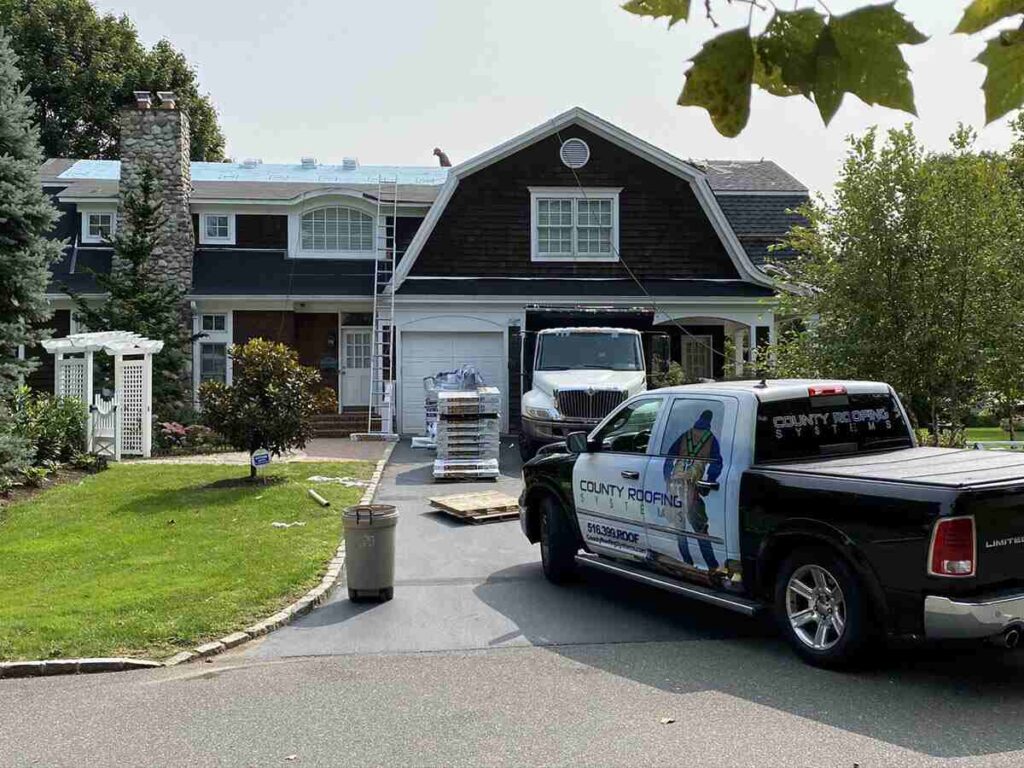
The Reactive Homeowner
Ignores minor problems for 5-7 years. Emergency repairs during storms: $2,400. Interior damage from leaks: $4,800. Mold remediation: $3,200. Structural repairs: $5,500. Premature roof replacement: $18,000. Total: $33,900.
Roof fails at year 18 instead of lasting 25 years. Additional costs include higher energy bills, reduced property value, and stress from repeated emergencies. Neglected roof repairs can lead to water intrusion and rot that threaten multiple parts of your home—even your foundation—resulting in even more costly structural problems.
The financial difference between proactive and reactive approaches equals $28,400 over the same period—more than the cost of a complete roof replacement.
Insurance Implications
Insurance covers sudden, unexpected damage—not long-term neglect. Claims denied due to deferred maintenance mean you’re paying out-of-pocket for problems insurance might have covered.
Documented maintenance strengthens insurance claims when legitimate storm damage occurs. Adjusters look favorably on homeowners who maintain their property properly.
Take Action Today: Protect Your Investment
Delaying roof repairs doesn’t save money—it guarantees you’ll spend more. Much more.
The time to address roofing problems is when they’re small, manageable, and relatively inexpensive. Waiting transforms simple repairs into complex, expensive disasters that strain budgets and create stress.
County Roofing Systems has served Long Island homeowners for over 35 years. We’ve seen countless examples of how delayed repairs cost 5-15 times more than immediate action would have.
Our honest assessments help you understand exactly what’s wrong, what it costs to fix, and what happens if you delay. We explain repair versus replacement decisions clearly so you make informed choices.
Don’t wait for small problems to become expensive disasters.
Call County Roofing Systems at (888) 366-6619 for a free roof inspection today. Let’s address problems while they’re still small and manageable—protecting your home and your wallet.
- First Approvals
- 0% financing
- No income check
- Up to 15 years
- Monthly payments as low as $149
Call today or contact us below for a FREE roofing estimate:
Frequently Asked Questions
Can I wait until spring to fix my roof?
Depends on the problem. Missing shingles or active leaks shouldn’t wait—every storm causes more damage. Minor issues without active leaks might safely wait a few months, but why risk it?
Winter delays mean snow, ice, and freeze-thaw cycles continue damaging your roof. Spring repairs cost the same as winter repairs but with months of additional damage.
How do I know if damage is urgent?
Active leaks, missing shingles, visible sagging, and damaged flashing all require immediate attention. Leaks can quickly lead to moisture buildup, which causes mold growth, water infiltration, and deterioration of roofing materials. Schedule emergency inspection for peace of mind.
Even “non-urgent” problems should be addressed within weeks, not months. The distinction between urgent and non-urgent is mostly about timing, not whether repair is needed. Promptly handling necessary repairs helps prevent escalating damage and higher costs down the line.
Will my insurance cover delayed repair damage?
Generally no. Insurance covers sudden, unexpected damage from storms or accidents—not gradual deterioration from neglect.
If evidence shows you knew about problems and ignored them, insurance companies deny claims. Prompt repairs protect both your home and insurance coverage.
Should I DIY roof repairs to save money?
Roofing work involves safety risks, requires proper materials and techniques, and affects your home’s weather-tightness. Improperly completed repairs often cost more to fix than professional service would have cost initially.
County Roofing Systems’ professional repairs include warranties. DIY repairs void manufacturer warranties and create liability if improper work causes future damage.
How long can a “small” leak safely wait?
No leak is safely ignored. Even slow leaks cause cumulative damage that worsens each rain event.
What seems like minor water intrusion is causing major damage you can’t see. Schedule inspection immediately to assess actual damage extent.
What if I’m planning to sell soon?
Address problems before listing. Buyers’ home inspectors will find issues, giving buyers negotiating leverage.
Proactive repairs cost less than price reductions or credits demanded during negotiations. You’ll also sell faster with a problem-free roof.

